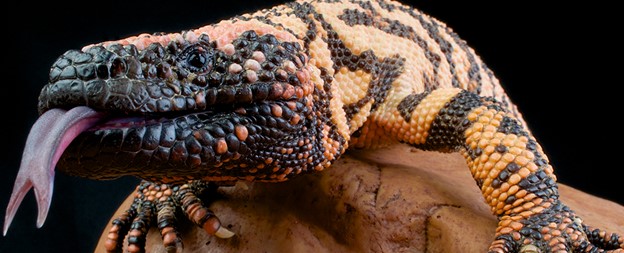
This wildly popular drug is a synthetic form of GLP-1 (glucagon-like peptide-1), a hormone that regulates blood sugar and curbs appetite. But few know the unusual origin of this most modern therapy.
The story starts with the Gila monster, a chunky, slow-moving lizard found in the deserts of the southwestern U.S. and northwestern Mexico. This creature is a master of survival, able to fast for months and needing as few as 5 meals a year to survive.
In the 1990s, scientists zeroed in on its secret weapon: exendin-4, a peptide lurking in its venomous saliva. This toxin doesn’t just knock out prey—it crashes their blood sugar, triggering hypoglycemia. Catching researchers’ eyes was its uncanny resemblance to human GLP-1, with a superpower: it sticks around in the body far longer.
That durability sparked a breakthrough. Using exendin-4 as a blueprint, scientists engineered exenatide (Byetta), the first Gila-inspired drug, before perfecting semaglutide. Tailored for humans, it achieved the FDA’s approval list in 2017 for the treatment of type 2 diabetes. And its use continues to make history.
So, while Ozempic, Wegovy, and Mounjaro’s family of drugs are not directly “Gila monster venom,” their development owes a lot to the natural chemistry of these funky lizards! Pretty wild, right?
Dr. L
Rob Landerholm, MD, FACS 20 March 2025

By Rob Landerholm
MD, FACS
Board Certified General Surgeon, Bariatric & Advanced Minimally Invasive Surgery